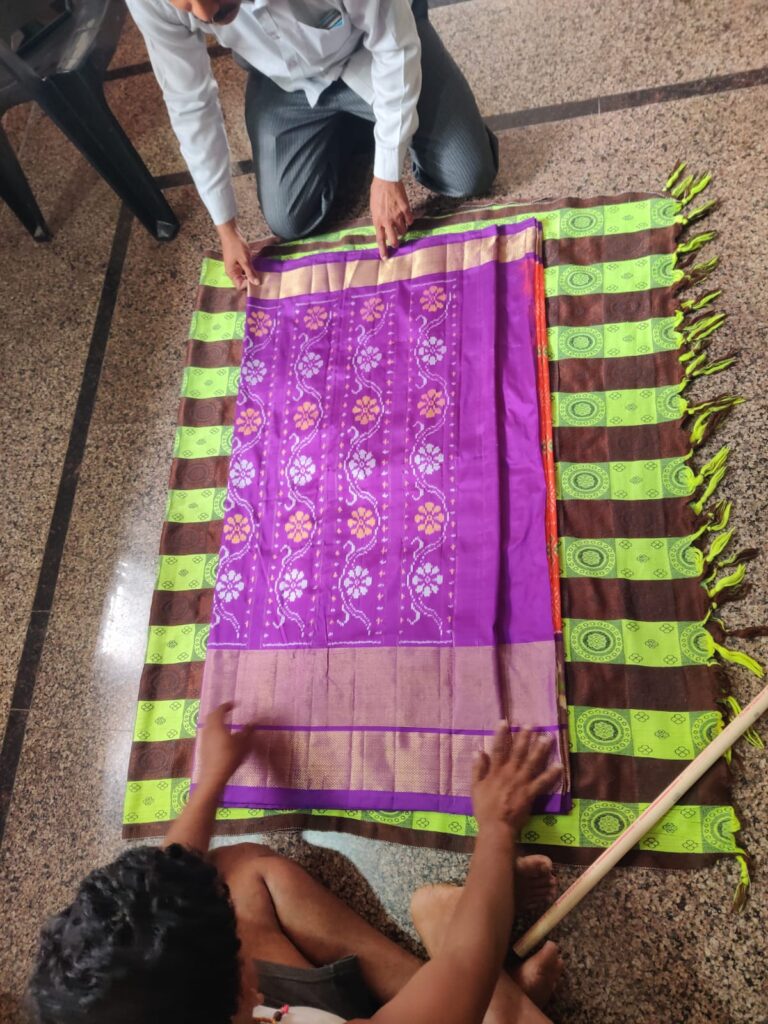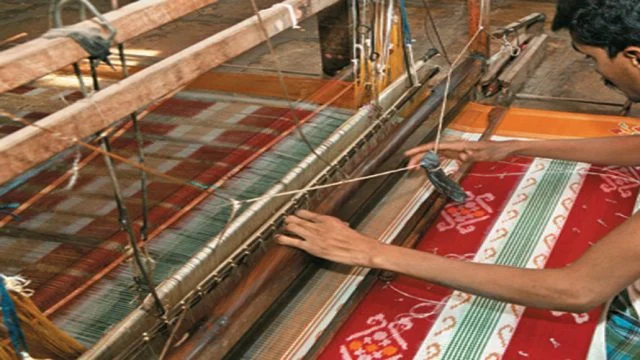Pochampally Ikkat: A Tradition in Transition

Pochampally: The Looms of Legacy and the Future of Ikkat Weaving
Nestled in the heart of Telangana, the town of Pochampally is world-renowned for its mesmerizing Ikkat patterns and exquisite handwoven sarees. Often dubbed as the “Silk City of India”, Pochampally’s weavers blend tradition and precision in a complex textile art that has earned a Geographical Indication (GI) tag and global recognition.
The Step-by-Step Process of Making a Pochampally Ikkat Saree
- Collection and Preparation of Yarn
The process begins with sourcing cotton or silk yarns, typically procured from mills in nearby towns like Hyderabad or Warangal.
Degumming and Bleaching: For silk, the raw yarn is degummed and bleached.
Drying: The cleaned yarn is dried before dyeing begins.
- Designing and Marking the Pattern
Pochampally’s magic lies in its “tie and dye” resist technique. Patterns are designed on graph paper, and each color and section is meticulously calculated. - Tying the Yarn (Resist Dyeing)
This step, called “Bandhana”, involves:
Tying sections of yarn tightly with threads to prevent dye penetration.
These areas remain undyed during the dyeing process, creating intricate patterns.
- Dyeing the Yarn
Yarns are dipped in dye vats (using natural or synthetic dyes).
The process is repeated for multiple colors, drying and retying in between.
This phase demands immense precision, as the final pattern must align perfectly when woven.
- Warping and Loom Preparation
Once dyed, yarns are set up on the warp beam (longitudinal threads). The loom is then calibrated manually to match the design specifications. - Weaving the Fabric
Using pit looms or frame looms, weavers interlace the dyed yarns into complex, colorful patterns.
The weft (horizontal threads) and warp (vertical threads) need to match precisely.
Each saree can take 7–10 days depending on the complexity of the design.
Challenges Faced by Pochampally Weavers
Despite the beauty and demand of their craft, Pochampally weavers face multiple hardships:
- Declining Profits
Middlemen often take the lion’s share of profits.
Fluctuations in raw material prices (especially silk) impact earnings.
- Lack of Market Access
Limited reach to national and international markets.
Dependence on government exhibitions or state-run emporiums.
- Labour-Intensive Process
The intricate dyeing and weaving process is time-consuming and physically taxing.
Younger generations are migrating to urban jobs, leading to a decline in skilled artisans.
- High Cost of Modernization
Power looms and automatic dyeing machines are costly.
Many weavers cannot afford to invest without external help.
Financial Support: Loans and Schemes
The government and cooperative societies have introduced various aids:
- Weaver Credit Card (WCC) Scheme
Offers loans up to ₹2 lakhs at subsidized interest.
Helps in purchasing raw materials, looms, and other necessities.
- Mudra Loans
Offered under Pradhan Mantri MUDRA Yojana.
Enables micro-financing for artisan-led enterprises.
- Cooperative Societies and DWCRA Groups
Help in bulk procurement, marketing, and fair pricing.
Provide weavers with basic wages and shares in profits.
- Handloom Weavers Comprehensive Welfare Scheme
Covers insurance, health, and pension benefits for registered weavers.
Innovative Ideas to Boost Productivity and Sustainability
To keep the legacy of Pochampally alive, a blend of traditional skill and modern innovation is key.
- Digital Design and CAD Tools
Use of Computer-Aided Design (CAD) tools for pattern-making.
Helps weavers replicate and innovate faster with fewer errors.
- Solar-Powered Looms
Reduces dependency on erratic power supply.
Cuts energy costs and boosts working hours.
- E-commerce and Direct-to-Customer Models
Platforms like Amazon Karigar, GoCoop, and personal websites enable weavers to reach global buyers.
Eliminates middlemen and improves profit margins.
- Skill Development and Youth Training
Government and NGOs offer training in dyeing, modern weaving techniques, and digital literacy.
Attracts younger generation to continue the craft.
- Sustainable and Eco-Friendly Practices
Adoption of natural dyes, organic cotton, and water-recycling units for dyeing processes.
Appeals to environmentally conscious consumers globally.
Conclusion: Weaving a Brighter Future
Pochampally’s Ikkat is more than just fabric—it’s a tapestry of culture, patience, and artistry. With appropriate financial backing, modern infrastructure, and greater visibility, the skilled hands of Pochampally can continue weaving not just sarees but also a stronger future for their community.




